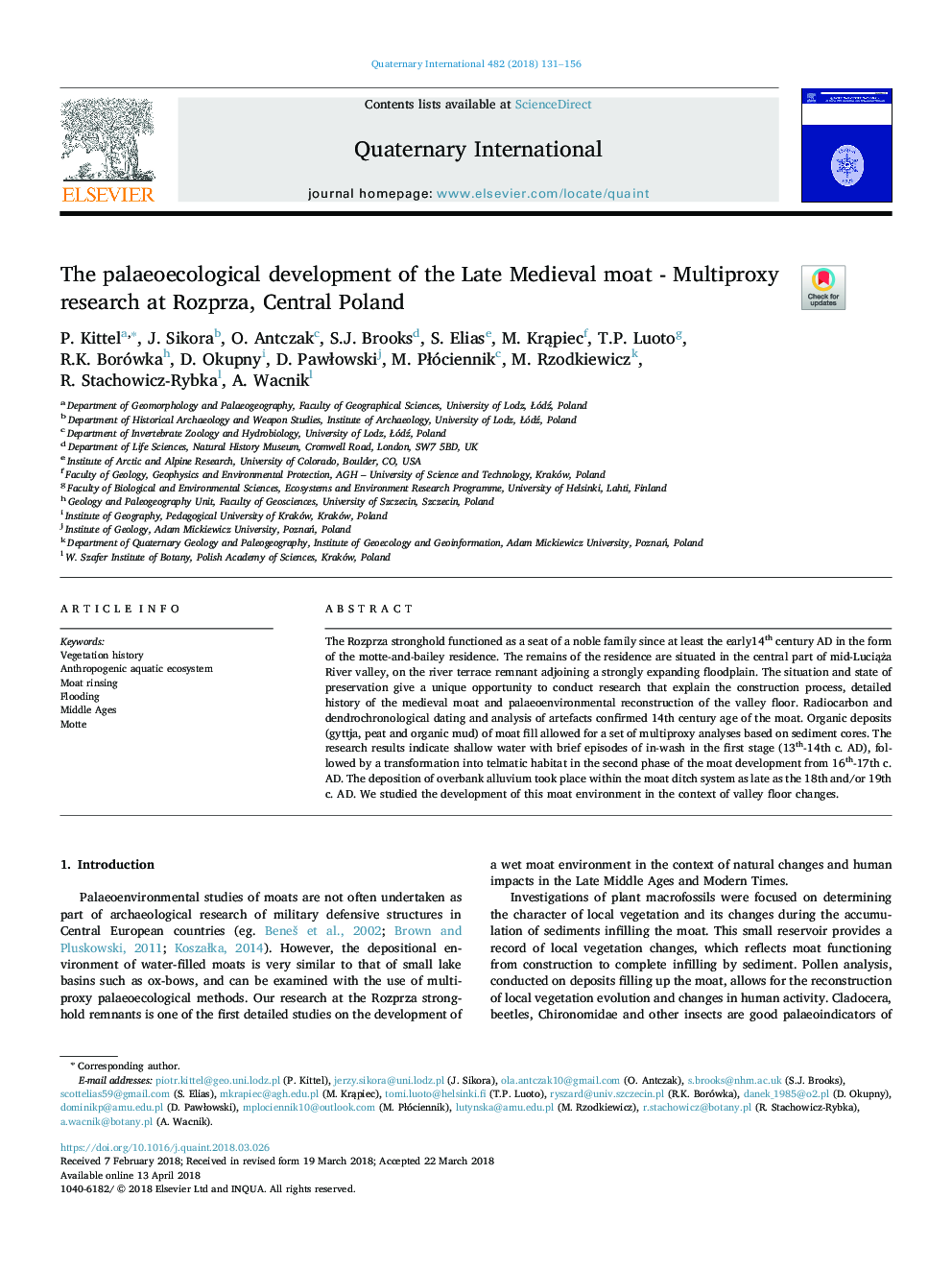| Article ID | Journal | Published Year | Pages | File Type |
|---|---|---|---|---|
| 7449233 | Quaternary International | 2018 | 26 Pages |
Abstract
The Rozprza stronghold functioned as a seat of a noble family since at least the early14th century AD in the form of the motte-and-bailey residence. The remains of the residence are situated in the central part of mid-LuciÄ
ża River valley, on the river terrace remnant adjoining a strongly expanding floodplain. The situation and state of preservation give a unique opportunity to conduct research that explain the construction process, detailed history of the medieval moat and palaeoenvironmental reconstruction of the valley floor. Radiocarbon and dendrochronological dating and analysis of artefacts confirmed 14th century age of the moat. Organic deposits (gyttja, peat and organic mud) of moat fill allowed for a set of multiproxy analyses based on sediment cores. The research results indicate shallow water with brief episodes of in-wash in the first stage (13th-14th c. AD), followed by a transformation into telmatic habitat in the second phase of the moat development from 16th-17th c. AD. The deposition of overbank alluvium took place within the moat ditch system as late as the 18th and/or 19th c. AD. We studied the development of this moat environment in the context of valley floor changes.
Related Topics
Physical Sciences and Engineering
Earth and Planetary Sciences
Geology
Authors
P. Kittel, J. Sikora, O. Antczak, S.J. Brooks, S. Elias, M. KrÄ
piec, T.P. Luoto, R.K. Borówka, D. Okupny, D. PawÅowski, M. PÅóciennik, M. Rzodkiewicz, R. Stachowicz-Rybka, A. Wacnik,
